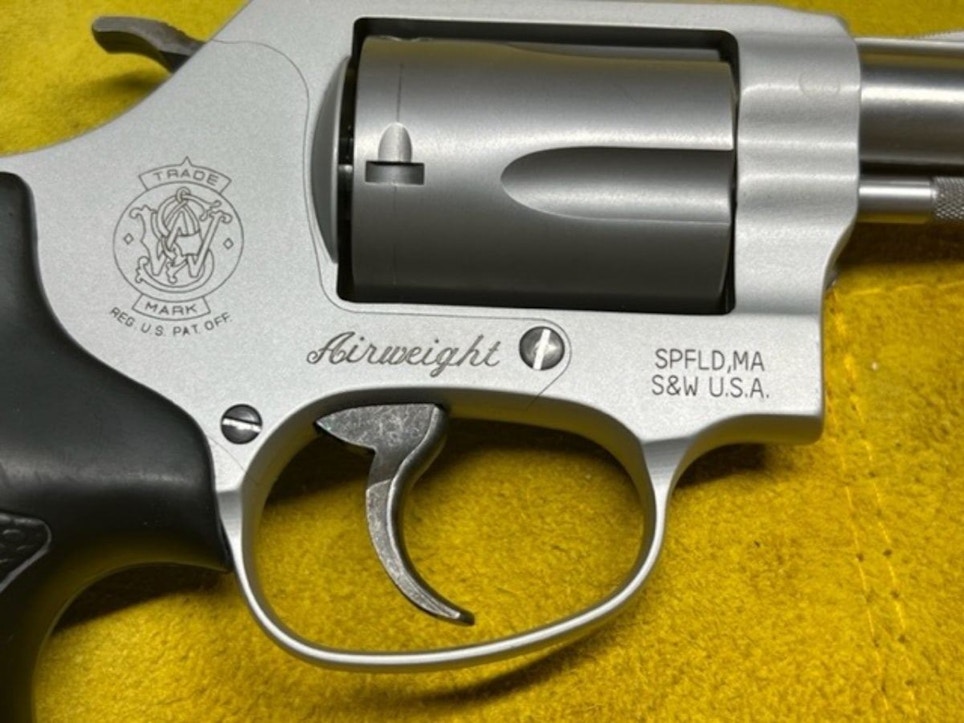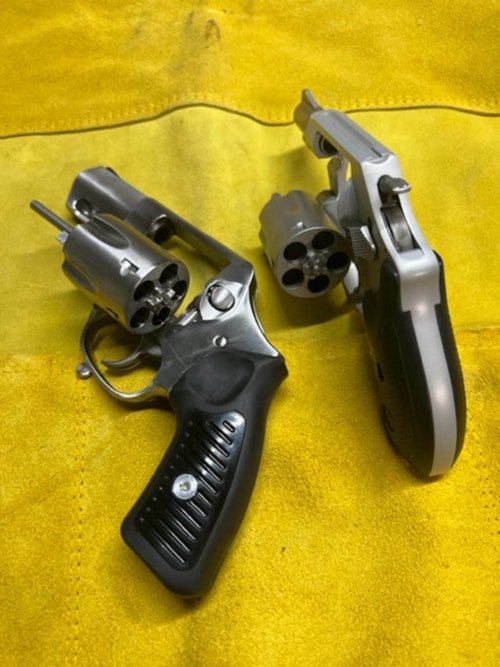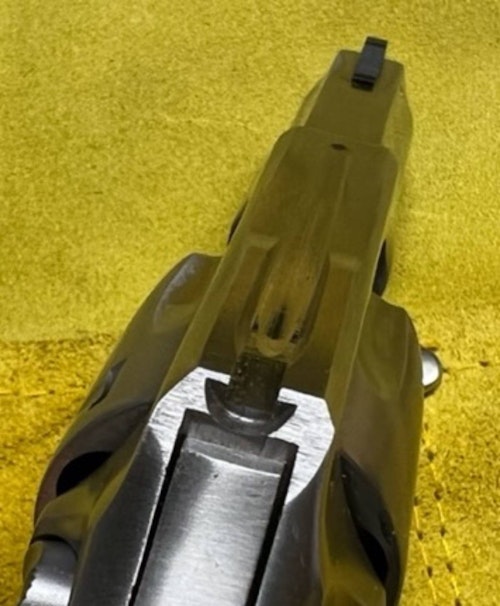We are living in the aftermath of a global pandemic. It seems that every time I look at the news, there is another report of a mass shooting somewhere in the country. There appears to be a constant barrage of gun-related violence across the country, and it has scared many people.
The one consistent theme is that the police can’t always be around when things go wrong. They show up after the fact. The result is that many people have been forced to consider self-protection. In 2021, there were a reported 5.4 million gun sales to first-time buyers. That made up 30% of the total guns sold. These people come into your shop looking for a means of self-protection – usually in the form of a handgun. Some of them may have picked up a magazine or looked for information online, but most are coming to your sales counter with no idea of which gun is best suited for their purposes and preferences.
There are many reasons why I’d recommend steering them toward a snubnose revolver as their first gun.
Ease of Operation
The first and foremost reason for recommending a revolver is that they are utterly reliable and easy to operate. Revolvers are much simpler in design and function. Once the cylinder is loaded, it is as simple as pointing and pulling the trigger, and the gun will go bang as expected. It will keep firing as long as the trigger is pulled and ammunition is in the cylinder.
Most compact revolvers hold five or six rounds in their cylinder. That’s plenty to handle most self-defense situations. It can be argued that the same can be said of semi-auto pistols and that they provide more rounds before a reload is needed. Semi-autos are also quicker and easier to reload. I’ll cede the first point, but it is just as easy to reload a revolver with a speed loader as it is to load a magazine-fed semi-auto. But the fact is that the entire operation of loading (loading a cylinder or speed loaders) is a lot easier than loading magazines.
Most new shooters struggle to get rounds into a magazine, which gets more challenging with each round. There’s also the matter of racking the slide on a semi-auto. Most new shooters struggle to overcome the tension of the recoil spring. This factor alone may steer someone with weaker hands to revolvers.
Revolver malfunctions are almost non-existent. When they do occur, it is usually bad ammunition. But if you compare the failure-to-fire drill of a revolver to that of a semi-auto, it’s easy to see how the revolver holds a significant advantage. The semi-auto requires a minimum of tapping the bottom of the magazine to ensure it is fully seated, racking the slide to eject the potentially faulty cartridge, then continuing to fire. Compare that to a revolver where the only thing needed is to pull the trigger again. For a new shooter, this is a huge factor.
The advantage of more rounds in the typical semi-auto can sometimes be a disadvantage as shooters in a high-risk situation may tend to shoot rapidly and trust that some of their rounds will find the target. This is the spray-and-pray method of aiming. But the person who knows they have only five or six rounds is more likely to aim and shoot discriminately. This latter contributes to better hit probabilities than the former.
Confidence Factor
Through many years of training new shooters, I know that it is easier for them to become competent with a revolver than to reach that same level of competence with a semi-auto. Too many things need to be mastered with the semi-auto, but 30 minutes of good training can make a person confident with everything they need to know about a revolver. That means that the average new shooter can defend themselves in the shortest time possible. One factor that many don’t consider is proper grip and wrist lock. Revolvers are forgiving of an improper grip, whereas semi-auto pistols depend on the stable grip to allow the slide to function correctly. If it is not held firmly, the shooter is forced back to the failure-to-fire drills of tap-rack-bang, as previously mentioned.
Trigger Pull
Semi-autos typically have lighter triggers than revolvers — especially the plethora of striker-fired handguns popping up everywhere. This might make revolvers a poorer choice for those shooters with weaker hands. That’s an arguable point depending on the circumstances. I know women who drop their snub-nosed revolvers into their voluminous purses where everything is juggled around in one compartment. I would certainly not recommend this method of carrying, but it happens more frequently than I’m comfortable with. Fortunately, the heavy trigger pull of the double-action revolver has a distinct advantage over a light pull on a striker-fired pistol, where an encounter with a tube of lipstick could be fatal.
The other advantage of the heavier trigger can come into play after a shooting event. It is less likely that prosecutors will argue that it was an accidental discharge rather than an intentional act of shooting someone. That’s no trivial matter these days. Accidental discharges are not covered by any self-defense protection, where an intentional shooting can be. That’s beyond the scope of this article, but it’s something to weigh when considering trigger pull.
Accessories
The availability of accessories weighs heavily in favor of the semi-auto pistol — or does it? A person buying a revolver will likely need only three other things: speed loaders, a quality holster and ammunition. The average person buying a semi-auto will be looking at all of the add-ons available, while the revolver shooter will already be on the range practicing. Lights, lasers, special sights, and silencers suddenly appear as necessities for semi-auto buyers. They are distractions. All of these have their place, but it is not in the hands of a new shooter who wants to feel secure in their ability to defend themselves.
Calibers
The different calibers available in revolvers are seemingly endless. They range from .22 Long Rifle to .500 Smith& Wesson. But most experts will recommend a .38 Special as a good starting point. The ammo is effective for self-defense, available almost anywhere ammunition is sold, and inexpensive. Many people are arguing about the best semi-auto cartridge. The big three are 9mm, .40S&W, and .45ACP. But when it comes to the revolver, there is almost universal agreement that the .38 Special is preferred in snubs.
End Results
In the end, very few of the guns sold will ever be used in a self-defense situation. Most will become residents of a bedside table or be kept in a vehicle's glove box. They will be forgotten and ignored until some drastic event makes people’s current fear come alive again. Then they will reach for their trusted gun for protection. Will the skills they learned stick with them and allow them to survive? If their choice was a revolver, there is a higher likelihood of that being true than with a semi-auto. It’s the simplicity that makes the revolver the best choice. It’s point-and-shoot.
It's up to you, as a trained professional, to take in all of the features of the various systems. You’ve got to compare the good points with the bad ones for each one and make a recommendation based on the totality of the circumstances. These new shooters may be mentally focused on one factor alone. You’ve got to help them see the whole picture. Their life may depend upon the advice that you give.








